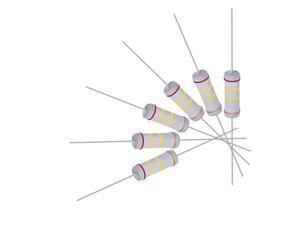


Resistors are commercially produced in variety of values. Integrated are restricted to low-current applications.įIGURE 6a-6b integrated resistors. The case shown contains seven resistors that are connected between the pins as shown in Figure 6b. These resistors are so small that several of them can be packaged in a single casing like the one shown in Figure 6a. Integrated resistors have the advantage of being extremely small. Integrated resistors are micro-miniature components that are made using semiconductors other than carbon. A wire-wound resistor has more surface area than a comparable carbon-composition resistor, so it can dissipate more heat. Wire wound resistors are used primarily in high-power applications that is, applications where components must be able to dissipate (throw off) a relatively high amount of heat. The longer the wire, the higher the resistance of the component.įigure 5 Wire-wound resistor construction. The value of the component is determined by the length of the wire between the leads. A wire-wound resistor is illustrated in Figure 5. Controlling the impurity levels makes it possible to produce carbon composition resistors with a wide range of values.įigure 4 Resistor manufacturing environment.Ī WIRE WOUND RESISTOR uses the resistivity of a length of wire as the source of its resistance. By adding IMPURITIES (other elements) to carbon during the manufacturing process, the resistivity of the carbon can be increased or decreased, depending on the amount and type of impurity used. The value of the carbon-composition resistor is determined primarily by the purity of the carbon. The relatively high resistivity of the carbon is the source of the resistor’s opposition to current.įigure 3 Current passing through a resistor. When current enters the resistor, it passes through the carbon that separates the leads, as shown in Figure 3. As you can see, the resistor has two metal leads (conductors) that are separated by carbon. The conductance of the carbon composition resistor is illustrated in Figure 2. The most commonly used resistor is the CARBON COMPOSITION RESISTOR.


 0 kommentar(er)
0 kommentar(er)
